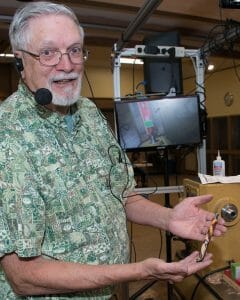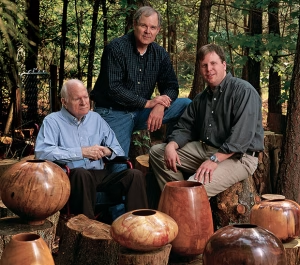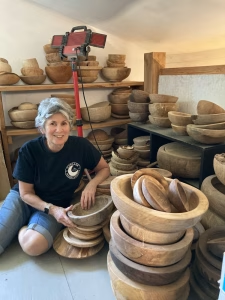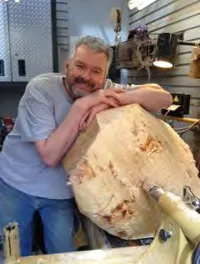This month is the second of two mini-symposiums for the year. The line up includes:
 Club member Jim Robson will be demonstrating how he turns ornaments including tree and bulb shaped ornaments. He will cover materials and prep of the blank, tools needed, mounting the blank, turning the blank, sanding and finishing;
Club member Jim Robson will be demonstrating how he turns ornaments including tree and bulb shaped ornaments. He will cover materials and prep of the blank, tools needed, mounting the blank, turning the blank, sanding and finishing;
 Club Member Ethan Green will be demonstrating how he turns Mini-Hollow Forms with a bery cool mini-hollowing kit he has assemb.ed with simple components purchased online. Attendees will oearn about the tools used as well as the techniques for working through a 1/4″ hole to hollow these miniture delights;
Club Member Ethan Green will be demonstrating how he turns Mini-Hollow Forms with a bery cool mini-hollowing kit he has assemb.ed with simple components purchased online. Attendees will oearn about the tools used as well as the techniques for working through a 1/4″ hole to hollow these miniture delights;
 SPSW Webmaster Tim Spaulding will be available to aid club members with access to the SPSW website and the Member’s Only section. Do bring your own computer if you need assistance;
SPSW Webmaster Tim Spaulding will be available to aid club members with access to the SPSW website and the Member’s Only section. Do bring your own computer if you need assistance;
 Club Member John Howard and the Club Store Sales Team will be on hand to help you stock up on shop supplies. Support the SPSW club through your supply purchases;
Club Member John Howard and the Club Store Sales Team will be on hand to help you stock up on shop supplies. Support the SPSW club through your supply purchases;
 Club Member Devin Garlick will be heading up the wood sales table. Support the SPSW club through your wood purchases;
Club Member Devin Garlick will be heading up the wood sales table. Support the SPSW club through your wood purchases;
 Club Member Jimmie Allen his storefront of D-Way and BoxMaster tools for the ease of shopping for your favorite woodturner’s critical needs.
Club Member Jimmie Allen his storefront of D-Way and BoxMaster tools for the ease of shopping for your favorite woodturner’s critical needs.








